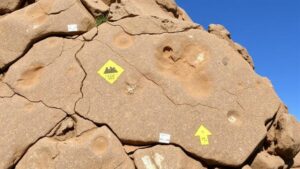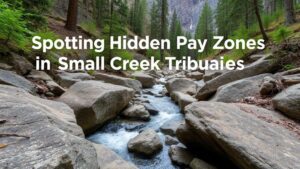How to Trace Carbonate Veins Upstream to Their Mineralized Source
Understanding Carbonate Veins and Their Significance
Carbonate veins are integral elements within geological formations, providing insights into mineralization processes and guiding exploration for valuable resources such as zinc, lead, and silver. These veins form through mineral precipitation from hydrothermal fluids, which move through fractures in carbonate-rich rocks. Tracing these veins upstream to their mineralized source is crucial for successful mineral extraction and understanding geological history.
Fundamentals of Trace Techniques
Geochemical Analysis
The first step in tracing carbonate veins involves meticulous geochemical analysis. This technique examines the elemental composition of the minerals present in the veins, offering clues about the source fluids.
- Isotopic Compositions: Stable isotopes of carbon and oxygen can indicate the temperature and environment of mineralization. For example, isotopic studies have shown that lighter isotopes of carbon (like carbon-12) suggest biogenic sources, while heavier isotopes (carbon-13) are typically tied to inorganic processes.
- Trace Element Signatures: Elements such as strontium or barium can provide additional information. Their concentrations might indicate proximity to certain mineral deposits, aiding in the identification of source locations.
Field Mapping Techniques
Field mapping is a practical approach to trace the direction of mineralized veins upstream. Geologists often create detailed maps marking the locations of carbonate vein occurrences in relation to surrounding geological features.
- Structural Mapping: By studying the geological structures, such as faults and folds, geologists can deduce the paths hydrothermal fluids took, which leads to veins origination points.
- Content Mapping: Documenting variations in vein compositions can highlight areas with enriched sources upstream, facilitating targeted exploration efforts.
Remote Sensing and Geophysical Methods
Advanced technologies enhance traditional methods of tracing carbonate veins. Remote sensing and geophysical methods allow for the mapping of subsurface structures.
- Electromagnetic Surveys: These surveys identify variations in the electrical conductivity of subsurface materials, pinpointing potential mineralized zones.
- Ground Penetrating Radar (GPR): GPR can visualize the structure of carbonate veins beneath the surface, assisting in understanding their spatial relationships with larger mineral deposits.
Case Study: Tracing Carbonate Veins in Northern Canada
A notable example of successful carbonate vein tracing occurred in Northern Canada, where geological mapping and isotopic analysis were employed to locate the source of rich zinc-lead mineralization.
Researchers initially sampled vein material and conducted isotopic geochemistry, revealing that the presence of specific trace metals correlated with nearby known deposits. Structural mapping indicated that the veins ran parallel to a major fault system, directing exploration toward potential mineralized zones. Subsequent drilling confirmed the presence of a previously undiscovered deposit that contained high concentrations of valuable minerals.
Challenges in Tracing Carbonate Veins
Despite advancements, challenges exist in successfully tracing carbonate veins upstream. The complexities of hydrothermal systems mean that existing mineralization patterns may not always straightforwardly connect to their sources. Some common issues include:
- Overlapping Mineralization: Carbonate veins may intersect or overlap, complicating the identification of specific sources.
- Fluid Migration Pathways: The non-linear movement of hydrothermal fluids adds uncertainty, making it challenging to establish direct correlations between surface samples and subsurface sources.
Actionable Takeaways
Tracing carbonate veins to their mineralized sources requires a multifaceted approach, blending geochemical analysis, field mapping, and modern geophysical techniques. Successful exploration relies on:
- Utilizing a combination of isotopic and trace element analysis to provide a clearer picture of potential vein origins.
- Useing thorough structural and content mapping to ascertain the relationships between different geological formations.
- Adopting technological tools like remote sensing for enhanced subsurface visualization.
By continuous refinement of these techniques, geologists can improve the accuracy of locating mineral sources and thus contribute to more effective resource management.



